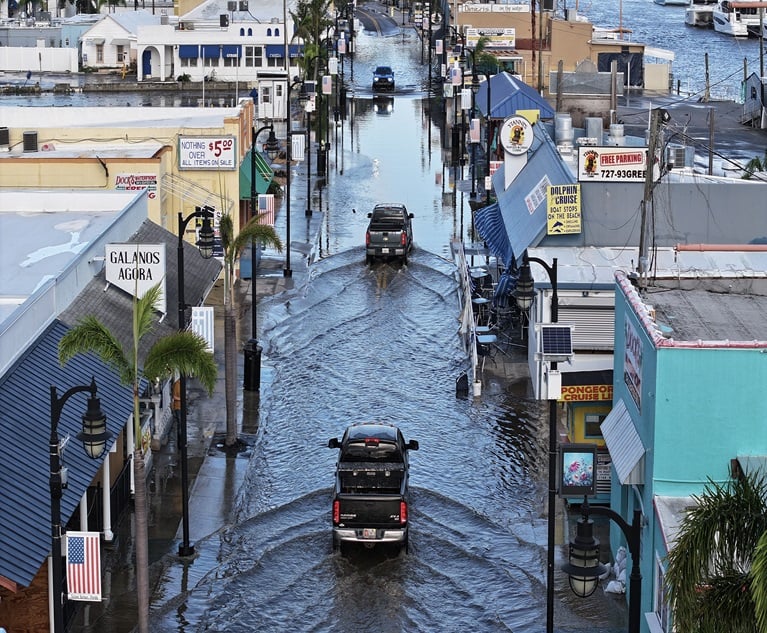 Flood waters inundate the main street after Hurricane Helene passed offshore on September 27, 2024 in Tarpon Springs, Florida. Hurricane Helene made landfall Thursday night in Florida's Big Bend with winds up to 140 mph and storm surges. (Photo credit: Joe Raedle/Getty Images North America/Bloomberg)
Flood waters inundate the main street after Hurricane Helene passed offshore on September 27, 2024 in Tarpon Springs, Florida. Hurricane Helene made landfall Thursday night in Florida's Big Bend with winds up to 140 mph and storm surges. (Photo credit: Joe Raedle/Getty Images North America/Bloomberg)
(Bloomberg) — Tropical Storm Helene is triggering dangerous rain and flooding across the U.S. South, where it has killed at least four people and cut power to nearly 4 million customers after coming ashore in Florida as a major hurricane.
Recommended For You
Want to continue reading?
Become a Free PropertyCasualty360 Digital Reader
Your access to unlimited PropertyCasualty360 content isn’t changing.
Once you are an ALM digital member, you’ll receive:
- Breaking insurance news and analysis, on-site and via our newsletters and custom alerts
- Weekly Insurance Speak podcast featuring exclusive interviews with industry leaders
- Educational webcasts, white papers, and ebooks from industry thought leaders
- Critical converage of the employee benefits and financial advisory markets on our other ALM sites, BenefitsPRO and ThinkAdvisor
Already have an account? Sign In Now
© Touchpoint Markets, All Rights Reserved. Request academic re-use from www.copyright.com. All other uses, submit a request to [email protected]. For more inforrmation visit Asset & Logo Licensing.







